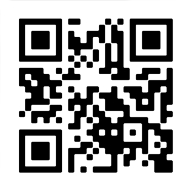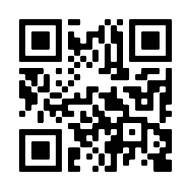Midwestern Dialect: The Heart Of Neutral American English
If you’ve ever heard someone say that Midwesterners have no accent, they’re not entirely wrong! The Midwestern dialect is often considered the most neutral form of American English, making it the preferred speech pattern for national news anchors and voice-over professionals.
But while this region’s speech may sound standard, it’s far from boring. From the friendly “Ope!” to the drawn-out vowels of the Upper Midwest, Midwestern English has its own unique charm.
This guide is part of our series exploring regional U.S. dialects, and in this blog we will be taking a look at the Midwestern region of the United States, what makes this dialect distinct, and why it’s often called the “General American” accent.
Neutral & Clear
The Midwest, often called “America’s Heartland,” is home to a range of dialects that are distinctive yet widely understood. Spanning states like Illinois, Indiana, Ohio, Michigan, Wisconsin, Minnesota, and Iowa, Midwestern English is often considered the foundation for Standard American English due to its clear pronunciation and lack of strong regional accents in some areas.
While the Midwestern dialect is commonly viewed as “neutral,” the region boasts diverse linguistic quirks that reflect its agricultural roots, immigrant history, and local culture.
Key Features of Midwestern Dialects
Pronunciation
- Vowel shifts: The Northern Cities Vowel Shift alters vowels, making “bag” sound like “beg” or “cot” sound closer to “cat.”
- Distinct “o” sound: In states like Wisconsin and Minnesota, words like “boat” and “go” have a rounded, almost musical quality.
- Flat intonation: Speech is often steady and unembellished, contributing to its reputation as “neutral.”
Grammar
Generally follows Standard American English grammar, with some informal shortcuts in casual conversations (e.g., “You wanna come with?” instead of “Do you want to come with me?”).
Vocabulary
Distinct regional terms influenced by agriculture, industry, and immigrant communities:
- “Pop” – Soda or soft drink.
- “Ope!” – An exclamation used when bumping into someone or making a mistake.
- “Hotdish” – A casserole, commonly used in Minnesota.
- “Casserole” – A more generic term for hotdish, used elsewhere in the Midwest.

Regional Variations in Midwestern Dialects
Northern Midwest (Minnesota, Wisconsin)
- Heavily influenced by Scandinavian and German settlers.
- Key phrases:
- “You betcha” – An enthusiastic way of saying “absolutely.”
- “Uff da” – An expression of surprise or dismay, derived from Norwegian.
Inland North (Illinois, Michigan, Ohio)
- Features the Northern Cities Vowel Shift.
- Key phrases:
- “Jeet?” – A quick way of asking, “Did you eat?”
- “The lake” – Refers to the Great Lakes, particularly in Michigan or Illinois.
Great Plains (Iowa, Nebraska, Kansas):
- Speech tends to be slower and closer to “standard” American pronunciation.
- Common phrases:
- “Ain’t” – Often used colloquially in rural areas.
- “Bless your cotton socks” – A charming, old-fashioned way of expressing gratitude or affection.
Common Midwestern Phrases & Their Meanings
- “Ope, let me sneak past ya” – A polite way of asking someone to move aside.
- “It’s colder than a witch’s elbow” – An exaggerated way of describing cold weather.
- “That’s different” – A reserved way of expressing confusion or polite disapproval.
- “Stop and go lights” – Traffic lights, particularly in rural areas.
- “The cities” – Refers to Minneapolis-St. Paul in Minnesota or other nearby metropolitan areas.
Midwestern Dialects in Pop Culture
The Midwestern dialect has been immortalized in movies and TV shows like Fargo (both the film and the television series), which exaggerates the Minnesota accent, or Parks and Recreation, which captures the quirky charm of Indiana. These portrayals have popularized Midwestern speech and showcased its humor and warmth.
Cultural Significance of Midwestern Dialects
The Midwest is often viewed as the linguistic and cultural backbone of the United States. Midwestern speech is associated with friendliness, practicality, and straightforwardness. The clear and neutral pronunciation of some regions has made it the default for national broadcasters and media.
However, beneath the “neutral” surface lies a rich tapestry of regional quirks and expressions. The dialects reflect the Midwest’s agricultural heritage, immigrant communities, and strong sense of local pride.
Midwestern accents themselves are rich and varied, and locals will be able to easily identify the region from which an accent originates.
Speak English with Confidence
Whether you call it “neutral” English or just the way people talk in the Heartland, the Midwestern dialect has influenced American speech more than you might think. Its clarity and consistency make it a model for English learners, but its regional quirks add personality and warmth.
At Excel English Institute, we help students master English pronunciation and understand regional accents to improve communication skills in real-world settings. Want to speak English with confidence? Join our ESL programs today!
Excel English Institute’s U.S. Dialects Guide for ESL Learners
Below is a list of the dialects we will be exploring in this series. Links will be added as they are published, so check back for updates!
- Discovering U.S. Dialects: A Guide for ESL Learners
- Midwestern Dialect: The Heart of Neutral American English
- Southern Dialects: The Warm & Melodic Voices of The South
- Northeastern Dialects: The Voice of America’s Historical Heart
- Western Dialects: The Language of The Open Frontier
- Southwestern Dialects: A Blend of Cultures & Languages
- Appalachian Dialect: Preserving The Language of The Mountains
- Hawaiian Pidgin: The Unique Voice of The Aloha State
- African American Vernacular English (AAVE): A Rich & Influential Dialect














